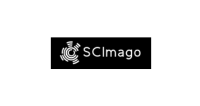The effects of dexamethasone and erythropoietin on mice sciatic nerve crush injury: histopathologic and functional outcomes
DOI:
https://doi.org/10.5380/avs.v28i3.85581Palavras-chave:
Peripheral neuropathy, pharmaceutical agents, regenerationResumo
Peripheral neuropathies are one of the major causes of motor and sensory disability. The multitude of nerve injuries and associated comorbidities provides a strong impetus to find a drug that potentiate or accelerate axonal regeneration. Systemic drug delivery has been a promising strategy in this regard. This study aimed to evaluate dexamethasone and erythropoietin effects on sciatic nerve regeneration. Twenty-three mice were randomly assigned to sham, control, dexamethasone, erythropoietin, and dexamethasone + erythropoietin groups. The left sciatic nerve was crushed using mosquito hemostatic forceps. Medications were administered once daily for 28 days. The sham group received neither crush injury nor medication. Histopathologic and walking track analyses were performed. Medical therapy influence on functional recovery was observed in as soon as 14 days. Although functional recovery was superior in the dexamethasone + erythropoietin group, a complete return to near-normal function was seen after 28 days in all of the groups. Dexamethasone yielded superior SFI values compared to the erythropoietin on day 14, although this was not statistically significant (p = 0.534). Histopathologically, recovery of average axonal number up to 75% normal nerve and significant decline of axonal swelling was observed in the erythropoietin and dexamethasone + erythropoietin groups, which were statistically significant compared to the dexamethasone group (p = 0.008). Marked immunoreactivity to Glial fibrillary acidic protein (GFAP) was present in the dexamethasone group. Furthermore, immunoreactivity to S-100 protein was observed in regenerated nerves in all groups. Present data provide insights into the neurotrophic effects of dexamethasone and erythropoietin on sciatic crush; however, further investigation is required to justify the clinical application of these agents.
Downloads
Publicado
Como Citar
Edição
Seção
Licença
Autores que publicam nesta revista concordam com os seguintes termos:
- Autores mantém os direitos autorais e concedem à revista o direito de primeira publicação, com o trabalho simultaneamente licenciado sob a Creative Commons - Atribuição 4.0 Internacional que permite o compartilhamento do trabalho com reconhecimento da autoria e publicação inicial nesta revista.
- Autores têm autorização para assumir contratos adicionais separadamente, para distribuição não-exclusiva da versão do trabalho publicada nesta revista (ex.: publicar em repositório institucional ou como capítulo de livro), com reconhecimento de autoria e publicação inicial nesta revista.
- Autores têm permissão e são estimulados a publicar e distribuir seu trabalho online (ex.: em repositórios institucionais ou na sua página pessoal) a qualquer ponto antes ou durante o processo editorial, já que isso pode gerar alterações produtivas, bem como aumentar o impacto e a citação do trabalho publicado.
















